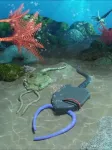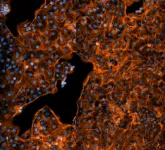“Increased time spent in the classroom, participating in some after-school activities or working a job was associated in our study with faster symptom resolution, especially for participants with lower post-acute symptom scores,” said lead author Jingzhen Ginger Yang, PhD, MPH, principal investigator in the Center for Injury Research and Policy of the Abigail Wexner Research Institute at Nationwide Children’s. “However, when activities involved significant screen time – like surfing the internet or playing video/computer games – during the first week post-injury, symptoms resolved more slowly.”
While some research on pediatric concussion has suggested an earlier introduction of physical activity promotes recovery, little is known about the intensity and duration of cognitive activity post-concussion and its potential influence on concussion recovery outcomes.
This new study, conducted by experts in Nationwide Children’s Center for Injury Research and Policy, division of Sports Medicine, Center for Biobehavioral Health, and division of Emergency Medicine evaluated the intensity and duration of daily cognitive activity reported by adolescents (age 11-17 years) following concussion and examined the connections between these activities and symptom duration. Participants reported increases in low-intensity cognitive activities – such as listening to music, reading, watching television, and making or receiving phone calls – and total minutes of overall cognitive activities as their symptoms resolved.
Previous clinical guidelines for youth with concussions have recommended complete physical and mental rest until symptoms resolve to avoid re-injury and reduce the demands on injured tissue. However, recent clinical and experimental data have demonstrated that prolonged physical rest does little to improve functional outcomes, and the resulting isolation and withdrawal can have unintended physical, social and educational consequences.
“Children and teens should be encouraged to get back to their routines and take part in activities like clubs, jobs and homework after experiencing concussion, but keep in mind that for some patients, prolonged screen time in non-school activities such as gaming or internet scrolling can affect recovery if it is worsening their symptoms,” said co-author Thomas Pommering, DO, division chief and director of concussion clinics of Nationwide Children’s division of Sports Medicine. “We recommend concussion patients pick their screen activity wisely, focusing on school demands first.”
According to the study, the average time children returned to school after a concussion was almost one week. Symptoms resolved more slowly when returning to school was delayed. Additionally, participating in club activities was associated with faster symptom resolution.
“Having a better understanding of the appropriate ‘dosing’ and timing of introducing cognitive activity is critically needed for our patients,” explains co-author James MacDonald, MD, MPH, sports medicine physician at Nationwide Children’s. “Increased engagement in the classroom during the first week post-concussion, especially for youth with lower post-concussion symptom scores, can mean symptoms resolve faster and teens get back to normal life.”
The relationship between level of cognitive activity and symptom resolution may be bidirectional, with improving post-concussion symptoms prompting higher levels of cognitive activity and vice versa. Thus, controlling for current symptom levels when assessing associations between cognitive activity and symptom resolution, as this study did, is crucial.
This study has several important clinical implications:
Adolescents with concussion, especially those with relatively less severe post-acute symptoms, may benefit from moderate- to high-intensity cognitive activity as early as the first week post-injury. Limiting (but not prohibiting) moderate-intensity activities involving significant screen time (e.g., surfing the internet or video/computer gaming) during the first-week post-injury may help speed recovery. Early introduction of returning to school following concussion is an important consideration that may hasten timelines for recovery. Families should collaborate with their child’s care team to develop a plan based on injury severity and recovery milestones.
Citation: Yang J, Alshaikh E, Asa N, et al. Br J Sports Med Epub ahead of print: 12 February 2024. doi:10.1136/bjsports-2023-107601
The Center for Injury Research and Policy (CIRP) of the Abigail Wexner Research Institute at Nationwide Children’s Hospital works globally to reduce injury-related pediatric death and disabilities. With innovative research at its core, CIRP works to continually improve the scientific understanding of the epidemiology, biomechanics, prevention, acute treatment, and rehabilitation of injuries. CIRP serves as a pioneer by translating cutting edge injury research into education, policy, and advances in clinical care. For related injury prevention materials or to learn more about CIRP, visit www.injurycenter.org. Follow CIRP on X @CIRPatNCH.
About The Abigail Wexner Research Institute at Nationwide Children's Hospital
Named to the Top 10 Honor Roll on U.S. News & World Report’s 2022-23 list of “Best Children’s Hospitals,” Nationwide Children’s Hospital is one of America’s largest not-for-profit free-standing pediatric health care systems providing unique expertise in pediatric population health, behavioral health, genomics and health equity as the next frontiers in pediatric medicine, leading to best outcomes for the health of the whole child. Integrated clinical and research programs are part of what allows Nationwide Children’s to advance its unique model of care. As home to the Department of Pediatrics of The Ohio State University College of Medicine, Nationwide Children’s faculty train the next generation of pediatricians, scientists and pediatric specialists. The Abigail Wexner Research Institute at Nationwide Children’s Hospital is one of the Top 10 National Institutes of Health-funded free-standing pediatric research facilities in the U.S., supporting basic, clinical, translational, behavioral and population health research. The AWRI is comprised of multidisciplinary Centers of Emphasis paired with advanced infrastructure supporting capabilities such as technology commercialization for discoveries; gene- and cell-based therapies; and genome sequencing and analysis. More information is available at NationwideChildrens.org/Research.
-30-
END








